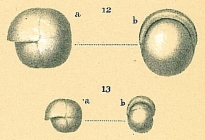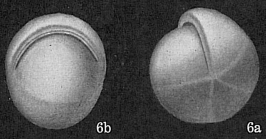RAS taxon details
Pullenia Parker & Jones in Carpenter et al., 1862
112132 (urn:lsid:marinespecies.org:taxname:112132)
accepted
Genus
marine, brackish, fresh, terrestrial
recent + fossil
feminine
Carpenter, W. B.; Parker, W. K.; Jones, J. R. (1862). Introduction to the Study of the Foraminifera. 319 pp. The Ray Society, London., available online at https://www.biodiversitylibrary.org/item/37432
page(s): p. 184 [details]
page(s): p. 184 [details]
Hayward, B.W.; Le Coze, F.; Vachard, D.; Gross, O. (2021). World Foraminifera Database. Pullenia Parker & Jones in Carpenter et al., 1862. Accessed through: RAS (Eds.) (2021) Register of Antarctic Species at: http://ras.biodiversity.aq/aphia.php?p=taxdetails&id=112132 on 2025-09-12
RAS (Eds.) (2025). Register of Antarctic Species. Pullenia Parker & Jones in Carpenter et al., 1862. Accessed at: https://ras.biodiversity.aq/aphia.php?p=taxdetails&id=112132 on 2025-09-12
Date
action
by
2006-09-28 06:51:36Z
changed
Martinez, Olga
original description
Carpenter, W. B.; Parker, W. K.; Jones, J. R. (1862). Introduction to the Study of the Foraminifera. 319 pp. The Ray Society, London., available online at https://www.biodiversitylibrary.org/item/37432
page(s): p. 184 [details]
basis of record Gross, O. (2001). Foraminifera, <B><I>in</I></B>: Costello, M.J. <i>et al.</i> (Ed.) (2001). <i>European register of marine species: a check-list of the marine species in Europe and a bibliography of guides to their identification. Collection Patrimoines Naturels,</i> 50: pp. 60-75 (look up in IMIS) [details]
additional source Neave, Sheffield Airey. (1939-1996). Nomenclator Zoologicus vol. 1-10 Online. <em>[Online Nomenclator Zoologicus at Checklistbank. Ubio link has gone].</em> , available online at https://www.checklistbank.org/dataset/126539/about [details]
additional source Loeblich, A. R.; Tappan, H. (1987). Foraminiferal Genera and their Classification. Van Nostrand Reinhold Company, New York. 970pp., available online at https://books.google.pt/books?id=n_BqCQAAQBAJ [details] Available for editors
page(s): p. 184 [details]
basis of record Gross, O. (2001). Foraminifera, <B><I>in</I></B>: Costello, M.J. <i>et al.</i> (Ed.) (2001). <i>European register of marine species: a check-list of the marine species in Europe and a bibliography of guides to their identification. Collection Patrimoines Naturels,</i> 50: pp. 60-75 (look up in IMIS) [details]
additional source Neave, Sheffield Airey. (1939-1996). Nomenclator Zoologicus vol. 1-10 Online. <em>[Online Nomenclator Zoologicus at Checklistbank. Ubio link has gone].</em> , available online at https://www.checklistbank.org/dataset/126539/about [details]
additional source Loeblich, A. R.; Tappan, H. (1987). Foraminiferal Genera and their Classification. Van Nostrand Reinhold Company, New York. 970pp., available online at https://books.google.pt/books?id=n_BqCQAAQBAJ [details] Available for editors
 Present
Present  Inaccurate
Inaccurate  Introduced: alien
Introduced: alien  Containing type locality
Containing type locality


